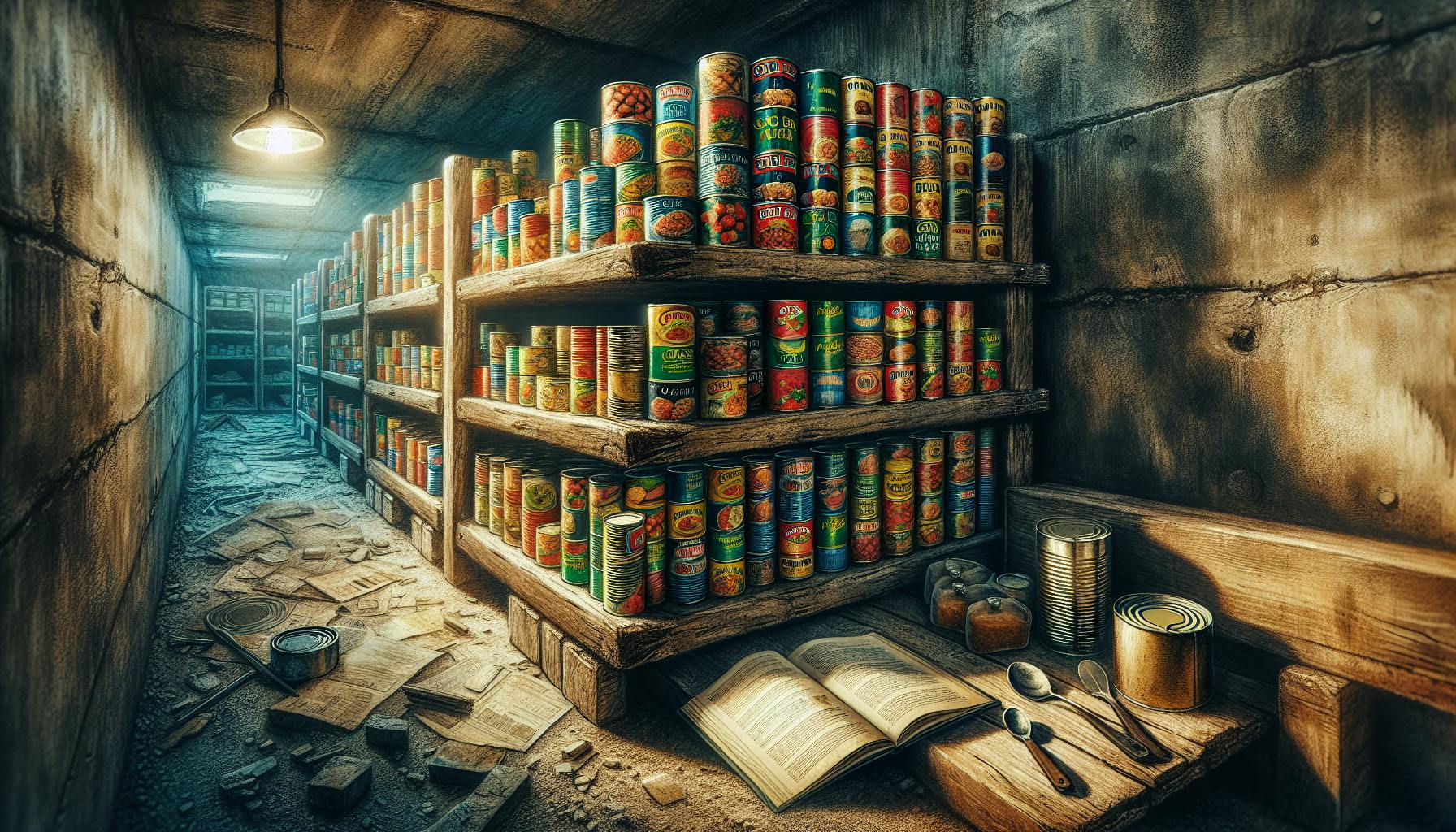Introduction
Having a stockpile of pre-cut and prepped vegetables can be an invaluable asset during emergencies and disasters. Taking the time to properly wash, peel, chop, and store produce in advance saves you precious time and mental bandwidth when every second counts during a crisis. Nothing adds to stress faster than having to peel and dice onions when the power is out and your family is hungry. Prepping veggies ahead takes that worry off your plate.
Having pre-washed lettuce makes throwing together a quick salad infinitely easier when you’re short on time and resources. Batch-freezing chopped carrots and other hardy vegetables ensures you have ready access to nutritious ingredients for soups, sides, and snacks even if you can’t get to the store. Proper storage methods help maintain nutrients and texture, while strategic freezing preserves flavor.
Pre-prepping vegetables allows you to focus your energy on more critical survival tasks like safety planning, emergency communications, and hustling to the crisis shelter. You avoid wasting money and food by having washed greens and chopped produce ready when you need them. Reducing waste saves not just dollars, but the time and gas required to replace spoiled food. Frozen vegetables stored properly can last 6 months to a year, saving you repeat trips to the grocery store during unstable times.
This guide will teach you the smartest practices for advance vegetable preparation, from choosing the right produce to storage methods that maintain freshness and nutritional value. Discover how a small time investment in washing and chopping vegetables now sets you up for quick, healthy meals later when disaster strikes. Learn which vegetables store best, plus tips to keep them fresh and delicious. You’ll find key prep steps for carrots, broccoli, cauliflower, bell peppers, and more. Get ready to streamline kitchen work and ensure your family has nutritious, home-cooked meals even during the toughest crises.
Why Invest Time in Pre-Prepping Vegetables?
- Saves hours of prep work peeling, chopping, dicing when cooking meals
- Avoids doing tedious vegetable prep in high-stress disaster situations
- Lets you grab ingredients like diced onions fast when time is critical
- Reduces waste by prepping produce before it spoils
- Grants peace of mind knowing you have healthy foods stockpiled
- Allows focus on higher priority safety tasks during emergencies
- Saves money by reducing food spoilage and waste
- Minimizes shopping trips for produce that often sells out fast in disasters
- Sets you up for quick, tasty meals even without electricity
How to Choose the Best Vegetables for Prepping
When selecting vegetables for advance prep, follow these guidelines:
- Pick hardy, dense options like carrots, broccoli, cauliflower, and bell peppers as they store better than leafy or watery vegetables
- Prioritize nutrition by selecting vibrantly colored vegetables packed with vitamins like sweet potatoes, red onions, and orange bell peppers
- Consider prep versatility - which veggies can be eaten raw, roasted, sautéed, etc?
- Factor in personal tastes - prep family favorites like potatoes, snap peas, zucchini
- Look for peelable options like cucumbers, carrots, onions which last longer when peeled
- Choose produce with longevity like cabbage, Brussels sprouts, and winter squash
- Opt for heirloom varieties like heirloom beets and carrots which often have better texture
Aim for a mix of nutrition-packed vegetables with skins and peelable options ideal for prepping.
Proper Storage for Peak Freshness
Use these storage methods to maintain nutrients and prolong freshness:
- Store prepped vegetables in airtight glass containers to prevent oxygen exposure. Mason jars work great.
- Place containers in crisper drawer of fridge or cool, consistently dark spaces like a basement or pantry
- Blanch vegetables like broccoli and carrots in boiling water before freezing to deactivate enzymes causing deterioration
- Toss cut veggies in lemon juice or vinegar to prevent oxidation of cut surfaces
- Portion vegetables in labeled freezer bags to allow easy grabbing of ingredients
- Use oldest frozen vegetables first and add new batches to back of freezer
- Label everything with contents and freezing dates for tracking
Maintaining Maximum Nutrition
Follow these tips to retain nutrients when cooking prepped vegetables:
- Avoid overcooking, which leaches vitamins into cooking liquid
- Steam or roast instead of boiling to preserve more nutrients
- Thaw frozen vegetables properly in fridge before cooking
- Cut veggies right before eating or cooking to retain vitamins
- Leave peels on when freezing to keep in fiber and nutrients
- Blanch prepped vegetables before freezing to lock in nutrients
Critical Food Safety Practices
When dealing with fresh produce, adhere to these food safety guidelines:
- Rigorously sanitize prep surfaces, utensils, hands before and after prepping
- Store perishables at proper refrigerator temp under 40°F
- Inspect vegetables for signs of spoilage like mold before use
- Allow frozen vegetables to fully thaw in refrigerator before cooking
- Label frozen bags with contents and freezing date
- Use oldest frozen vegetables first
Key Vegetables to Prep
Here are some of the best vegetables to pre-wash, peel, and chop for advance prep.
Carrots
- Scrub heirloom varieties like Atomic Red or Dragon carrots before peeling
- Trim greens to 1 inch, peel; leave peels on some for fiber
- Cut into sticks or slices; blanch 2 minutes before freezing
- Freeze in airtight bags up to 1 year; refrigerate sticks 2-3 weeks
Broccoli
- Cut washed heads into bite-size florets with some stem attached
- Blanch 2 minutes then ice bath before freezing to retain texture
- Pack frozen florets in labeled freezer bags removing excess air
- Store frozen 8-10 months; refrigerate raw 2 weeks
Cauliflower
- Remove outer leaves and cut into uniform small florets
- Blanch 2 minutes then ice bath to stop cooking
- Spread florets on tray and freeze initially before bagging
- Lasts 8 months frozen; keeps 2 weeks refrigerated
Bell Peppers
- Wash, core, and slice peppers into strips or dice
- Blanch 1 minute then ice bath to stop cooking
- Portion diced peppers into labeled freezer bags
- Keep refrigerated 5 days; frozen 10 months
Onions
- Peel, slice or dice onions into preferred sizes
- No need to blanch raw onions before freezing
- Vacuum seal bags to prevent freezer burn and odors
- Stores frozen 6 months; refrigerated 3-4 weeks
Fast Meal Ideas Using Prepped Veggies
Make healthy, delicious meals fast using your frozen and refrigerated pre-prepped vegetables:
Easy Soups
- Vegetable soup with frozen diced carrots, corn, peas
- Hearty minestrone with prepped onions, carrots, beans
- Creamy potato leek soup with frozen leeks, potatoes, kale
- Chili with pinto beans, frozen corn, peppers, tomato sauce
Simple Sides
- Roasted broccoli and cauliflower florets with olive oil
- Sauteed peppers and onions for fajitas or omelets
- Steamed heirloom carrot sticks with lemon and dill
- Garlic-sauteed frozen spinach
Nutritious Snacks
- Bell pepper slices with hummus
- Zucchini fries baked with parmesan
- Spicy roasted cauliflower florets
- Frozen peas microwaved with parmesan crisp
Hearty Casseroles
- Broccoli and chicken casserole with rice and cheddar
- Vegetable enchilada bake with black beans, frozen peppers
- Shepherd’s pie with frozen carrots, peas, onion, mashed potato top
Quick Pastas
- Bowtie pasta primavera with mixed frozen vegetables
- Spaghetti with meat sauce and frozen diced onion
- Cauliflower fried rice with frozen peas and carrots
Conclusion
Being prepared with pre-washed, chopped, and frozen vegetables saves you precious time while providing quick access to healthy ingredients during disasters and power outages. Follow proper storage methods like blanching and strategic freezing to maintain freshness, texture, and nutrients. Prioritize hearty, peelable veggies that store well. Employ food safety best practices like labeling frozen bags. Use your prepared vegetables to make fast, nourishing meals like veggie-loaded soups, sides, and snacks. A small time investment pre-prepping vegetables now means less stress and better nutrition for your family when you need it most during a crisis.


